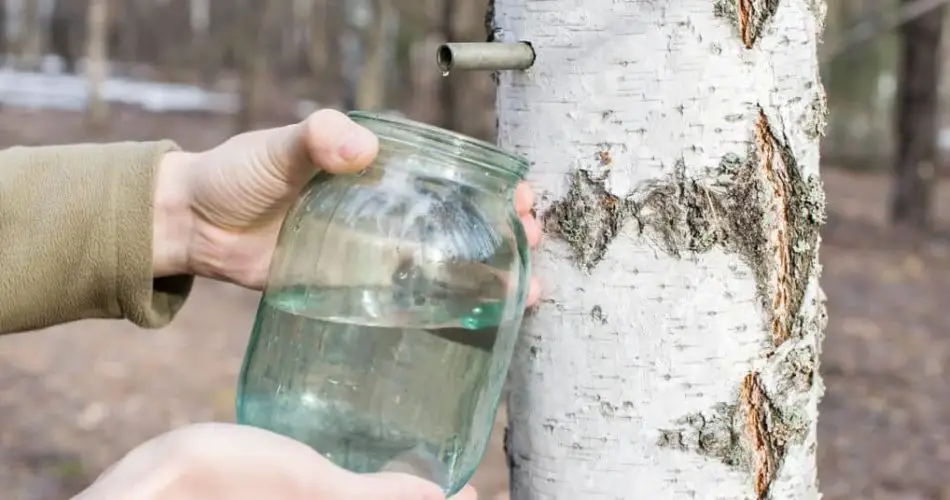Birch sap has been revered since ancient times by Slavic cultures for its healing properties and refreshing taste. This natural beverage is rich in sugars (fructose, glucose, sucrose), organic acids, enzymes, and antimicrobial substances like phytoncides. It also provides essential mineral elements crucial during spring vitamin deficiencies.
Season and Collection Method: The sap collection season spans from March to late April, coinciding with the emergence of tree buds. Optimal collection time is in the morning when sap flow is most active. It’s essential to select a mature birch tree with a trunk circumference around 25 cm. Avoid trees near roads or other pollutants due to potential toxic content.
Collecting Birch Sap: Choose a suitable spot on the trunk, typically 0.5 to 1 meter from the ground. Drill a hole approximately 2-3 centimeters deep. Ensure the hole is not too large to minimize damage. Seal the hole with a cork and apply garden varnish to protect the tree.
Storing Birch Sap: Fresh birch sap is best consumed without heating. Store it in the refrigerator for up to three weeks or preserve it by freezing, maintaining its beneficial properties.
Utilizing Birch Sap: Birch sap serves various purposes beyond drinking. It can be used to make birch kvass by adding rye crackers, sugar, and dried fruits. Additionally, it’s utilized in facial masks for its vitamin-rich properties.
Environmental Considerations: Ensure the collection site is environmentally clean and handle birch sap responsibly to preserve its purity and benefits.
Embrace this natural gift with mindfulness, respecting its traditions and health benefits while maintaining environmental stewardship. Birch sap not only refreshes but also enriches both body and spirit with its nourishing properties.



